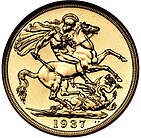User talk:Ntomer
Welcome!
Hello, Ntomer, and welcome to Wikipedia! Thank you for your contributions. I hope you like the place and decide to stay. Unfortunately, one or more of the pages you created, like The Indian Stammering Association, may not conform to some of Wikipedia's guidelines for page creation, and may soon be deleted.
There's a page about creating articles you may want to read called Your first article. If you are stuck, and looking for help, please come to the New contributors' help page, where experienced Wikipedians can answer any queries you have! Or, you can just type {{helpme}} on this page, and someone will show up shortly to answer your questions. Here are a few other good links for newcomers:
- Your first article
- Biographies of living persons
- How to write a great article
- The five pillars of Wikipedia
- Help pages
- Tutorial
I hope you enjoy editing here and being a Wikipedian! Please sign your name on talk pages using four tildes (~~~~); this will automatically produce your name and the date. If you have any questions, check out Wikipedia:Where to ask a question or ask me on my talk page. Again, welcome! -SpacemanSpiffCalvin‡Hobbes 07:05, 4 August 2009 (UTC)
Speedy deletion nomination of The Indian Stammering Association[edit]

A tag has been placed on The Indian Stammering Association requesting that it be speedily deleted from Wikipedia. This has been done under section G12 of the criteria for speedy deletion, because the article appears to be a blatant copyright infringement. For legal reasons, we cannot accept copyrighted text or images borrowed from other web sites or printed material, and as a consequence, your addition will most likely be deleted. You may use external websites as a source of information, but not as a source of sentences. This part is crucial: say it in your own words.
If the external website belongs to you, and you want to allow Wikipedia to use the text — which means allowing other people to modify it — then you must verify that externally by one of the processes explained at Wikipedia:Donating copyrighted materials. If you are not the owner of the external website but have permission from that owner, see Wikipedia:Requesting copyright permission. You might want to look at Wikipedia's policies and guidelines for more details, or ask a question here.
If you think that this notice was placed here in error, you may contest the deletion by adding {{hangon}} to the top of the page that has been nominated for deletion (just below the existing speedy deletion or "db" tag), coupled with adding a note on the talk page explaining your position, but be aware that once tagged for speedy deletion, if the page meets the criterion it may be deleted without delay. Please do not remove the speedy deletion tag yourself, but don't hesitate to add information to the page that would render it more in conformance with Wikipedia's policies and guidelines. -SpacemanSpiffCalvin‡Hobbes 07:05, 4 August 2009 (UTC)
Re:Your message[edit]
I understand that, but I am called upon to delete article that read like ads on site. In the welcome message I left you is a link to writing your first article, I would recommend reading the info there and then trying again. You need to create an article that explains what your company does, not encourage people to make use of it. TomStar81 (Talk) 07:10, 4 August 2009 (UTC)
- It does not change the fact that if the material is to exist here it needs to conform with our policies, guidelines, and regulations. If the article came verbatim from another website its going to need rewritten. Its that simple. Permission has nothing to do with it in this case. TomStar81 (Talk) 07:18, 4 August 2009 (UTC)
File source and copyright licensing problem with File:TISA Logo.jpg[edit]

Thanks for uploading File:TISA Logo.jpg. I noticed that the file's description page currently doesn't specify who created the content, so the copyright status is unclear. If you did not create this file yourself, you will need to specify the owner of the copyright. If you obtained it from a website, then a link to the website from which it was taken, together with a restatement of that website's terms of use of its content, is usually sufficient information. However, if the copyright holder is different from the website's publisher, their copyright should also be acknowledged.
As well as adding the source, we also need to know the terms of the license that the copyright holder has published the file under, usually done by adding a licensing tag. If you created/took the picture, audio, or video then the {{GFDL-self}} tag can be used to release it under the GFDL. If you believe the media meets the criteria at Wikipedia:Non-free content, use a tag such as {{non-free fair use in|article name}} or one of the other tags listed at Wikipedia:Image copyright tags#Fair use. See Wikipedia:Image copyright tags for the full list of copyright tags that you can use.
If you have uploaded other files, consider checking that you have specified their source and tagged them, too. You can find a list of files you have created in your upload log. Unsourced and untagged files may be deleted one week after they have been tagged, as described on criteria for speedy deletion. If the file is copyrighted under a non-free license (per Wikipedia:Fair use) then the file will be deleted 48 hours after 17:31, 22 November 2010 (UTC). If you have any questions please ask them at the Media copyright questions page. Thank you. ww2censor (talk) 17:31, 22 November 2010 (UTC)
Talkback[edit]

Message added 15:18, 23 November 2010 (UTC). You can remove this notice at any time by removing the {{Talkback}} or {{Tb}} template.
Did you know...[edit]
November 29,2010
|


